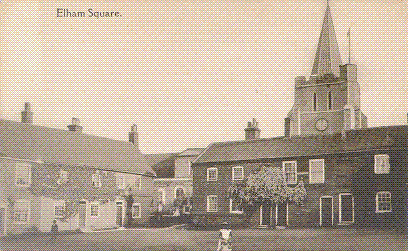
A Brief History of Elham and The Square
| Home Page |
Elham, pronounced "Eel-am", dates from Saxon times the name first appears as Alham in Domesday Book in 1085. The suffix "ham" is of the same derivation as the German word "heim", meaning "home". There are therefore two possible derivations one meaning as in the name Alkham - "place of the heathen temple" or alternatively because of connection with the abundance of eels in the Nailbourne.
After the Conquest, William I granted the Elham estates to his half brother Odo, Bishop of Bayeux, and, after the disgrace of the latter, to William d� Aubigny. Later John, Earl of Eu, a relative of the Conqueror, established himself in Elham by building a palace just south of the present Old Manor House and near St. Mary's Church Hall, where stone foundations have been found.
The Square or old Market Place of Elham adjoins the church yard on the north side trading took place here from early medieval times and was formalised by grant of a charter by Edward I in 1251, thereby becoming a market town. The market was held there every Monday until the mid 18th.century, and it was long renowned for the excellent quality of its leather and hides. The market or fair continued spasmodically until about 1830, when the old market booths, which backed on to the churchyard were made into cottages. These cottages were occupied by the military at the beginning of the war until they were demolished in 1940 and the site subsequently planted with shrubs.

The Square, Elham - showing the cottages before and after demolition.
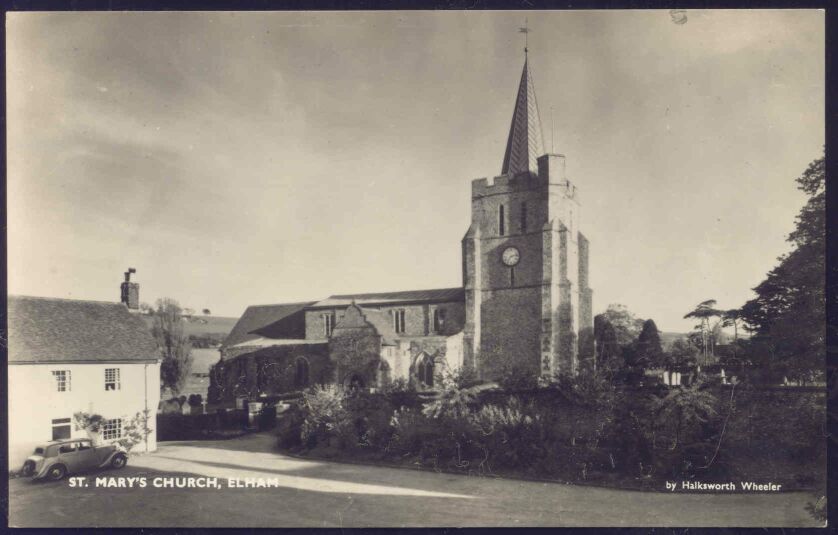
The wide part of the High Street marks the site of the annual Horse Fair, which was held here every Monday before Easter until about 1840.
Before the Industrial Revolution, Elham, in common with other towns and villages, was very largely self-supporting, and most of the needs of the inhabitants were met by local craftsmen. There are still old buildings behind the King's Arms and the Rose and Crown where ale was brewed, and the latter still has the old well, formerly fitted with a "Donkey Wheel" , for drawing the water. The forge of the local blacksmith was rebuilt as a garage in 1936. Rope-walk House in the High Street marks the place where ropes were made. Flax was grown locally, and made by hand into ropes and string of every thickness.
Even iron smelting was once carried on in the district, and old smelting-pots and iron ore have been discovered on Exted Farm.
Down near the old station, bricks were made. Even the Elham Valley Railway now belongs to the past, it was built in 1887, and was finally dismantled in 1947.
The old Poor's House and the Master's House, now private residences in the High Street, were once used to house the poor. They were moved to the newly built Work House at Etchinghill. Having been a hospital in recent times, this has now been demolished, leaving only the chapel, and the land used to build new housing.
Elham's Old Hospital behind the Old Poor's House and Master's House still stands, but it has been modernised and converted to a private dwelling.
Behind Mill House in the Old Road, stood a windmill until 1924, and a little further along, the small chapel of Bible Christians is now used as a private storeroom.
Books that have been published on Elham and the Elham Valley
|
Title |
Author |
Year |
Detail |
|
A Short History of Elham and it's Parish Church |
Rev. R. H. Isaac Williams |
1959 |
A short history of the village and the church, written by the Rev. Isaac Williams who was vicar from 1935 - 1957. |
|
The Elham Valley Railway |
Michael Forward |
1975 |
An excellent history of this East Kent branch railway line with some interesting pictures |
|
Welcome to Elham |
Mary K. Smith |
1976 |
Interesting and unusual historical comments about this village and the surrounding area |
|
A Harvest of Messerschmitts |
Dennis Knight |
1981 |
A Chronicle of Elham in 1940 based on the Diaries of a former teacher of mine, Mary K. Smith |
|
Elham Valley Reflections |
Brian Hart |
1989 |
An interesting collection of photographs of this area which basically follows the old Elham Valley railway with personal reflections by the author |
|
Along and Around the Elham Valley Way |
Brian Hart |
1994 |
What to see when walking the Elham Valley Way from Canterbury to Hythe |
|
A Century of Elham Photographs |
Mary K. Smith |
|
A collection of old photographs of Elham and many of its inhabitants compiled by Mary K. Smith |
|
My Life and Memories of Old Elham |
Bill Watson |
c1990 |
The personal memories of a long time resident of Elham which has a lot of information about the shops and owners in the first half of the 20th century |
|
The Bootshoe Boys |
Betty Coton |
2001 |
An extensive account of the Elham Charity School including a listing and some details of many of the pupils |
A Selection of photographs of The Square Elham
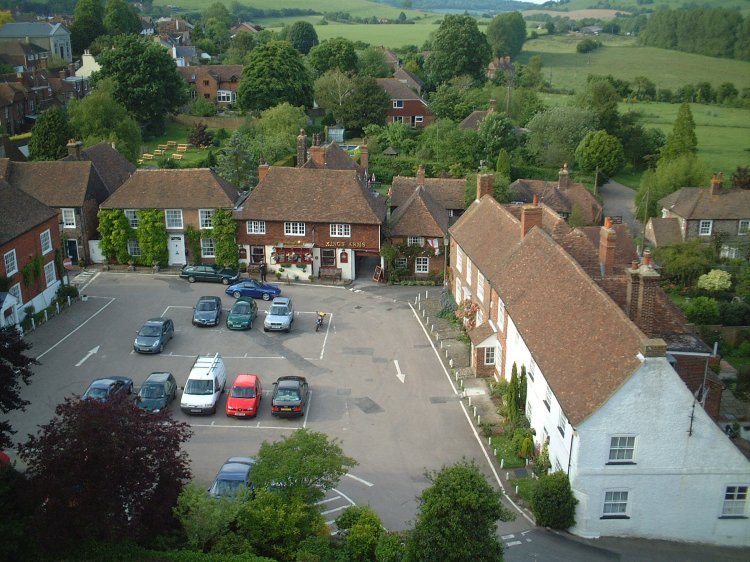
The View of The Square from St. Mary's tower taken in 2005
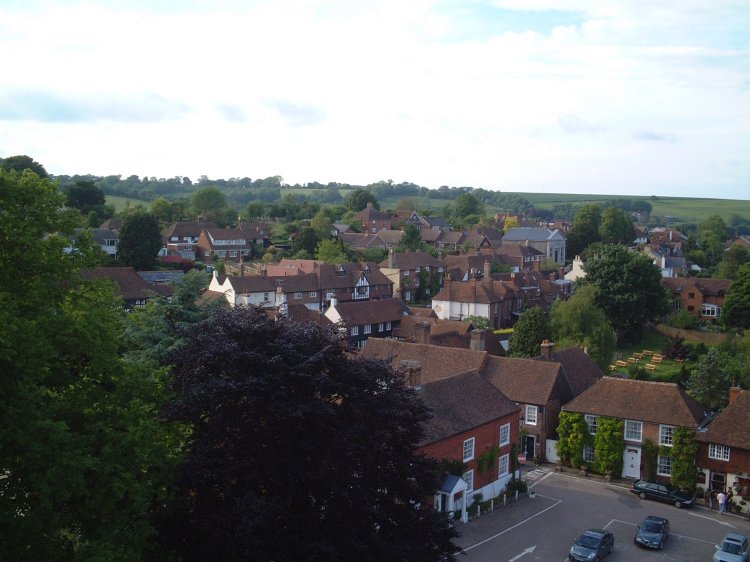
The same view but from the early 1900's
Houses on the East Side
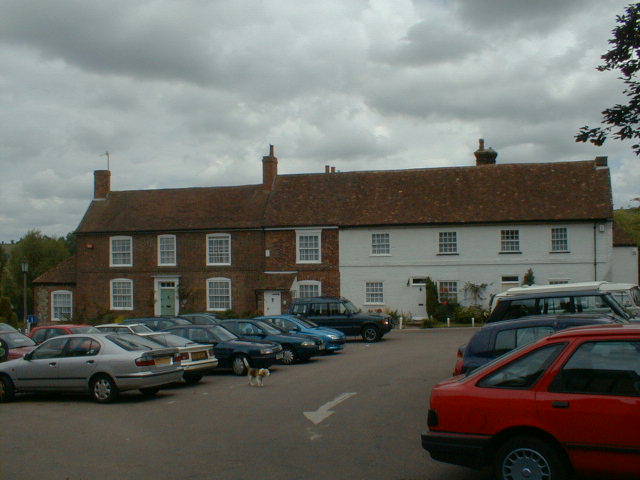
Houses on the West & North Sides
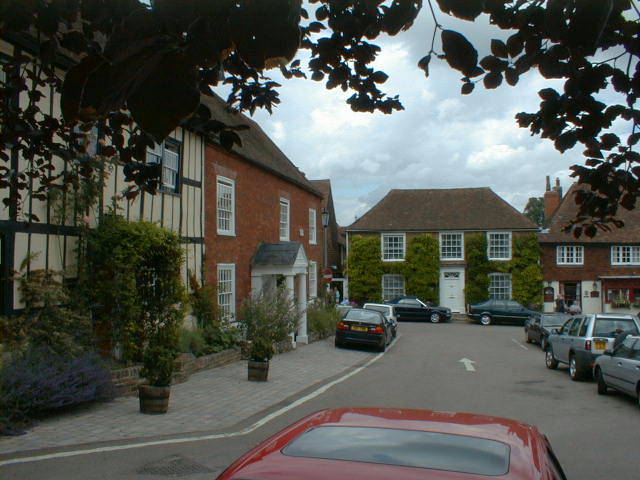
Markets are still occasionally held in the Square
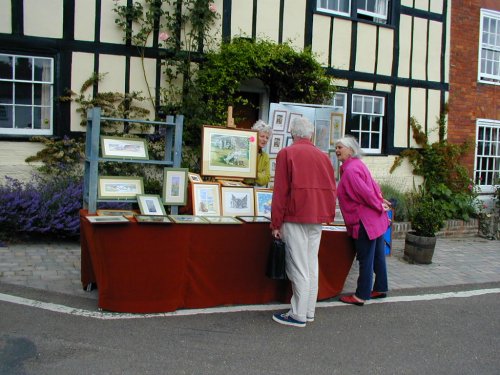
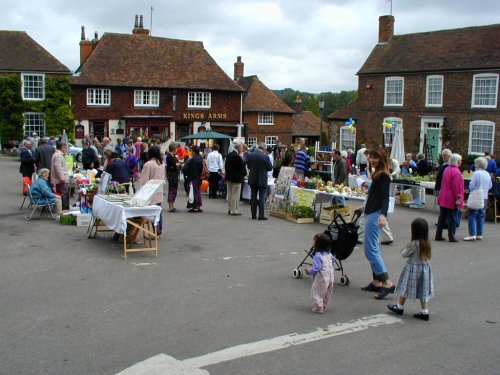
Bill Watson selling copies of his book "My Life and Memories of Old Elham"
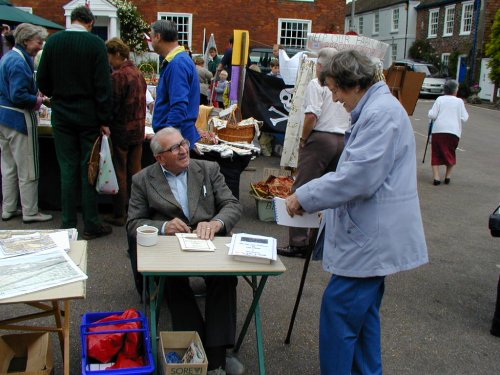
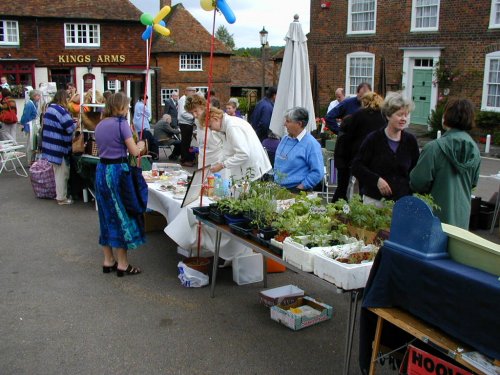
The Boxing Day Hunt 2002
Last updated 20/02/2014